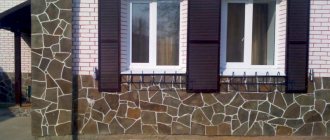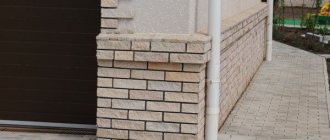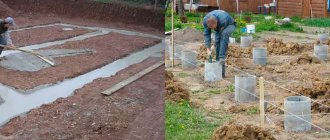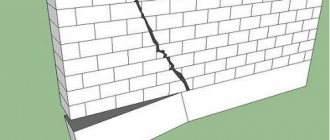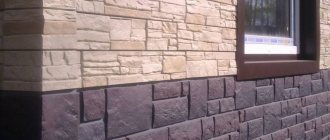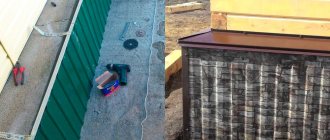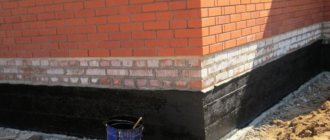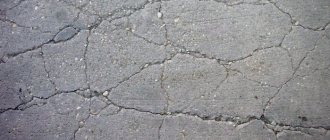The long life of any building depends on the reliability of its foundation. Concrete or brick, which are most often used to build a basement, have a porous structure that is susceptible to temperature changes, aggressive environmental influences and mechanical damage. A simple and effective protective measure against all these negative phenomena is base paint. The owner of the premises only needs to know how to paint the base of the house in order to provide it with reliable protection.
For such protection you will need:
- Prevent moisture penetration by impregnation, priming and subsequent painting;
- Choose the right paint for the foundation;
- Be sure to paint the base.
Construction supermarket consultants will certainly tell you how to paint the foundation in order to achieve a positive effect.
Base paint can be diluted with water or solvents. Along with the paint and varnish composition, it is recommended to purchase the appropriate primer.
Types of paint
Experts recommend the following types of paints and varnishes for painting the base and foundation:
- Acrylic, water-soluble paints are used for application to any type of surface.
- Alkyd based on synthetic solvents.

- Silicone for application on highly porous surfaces.

- PVA-based polyvinylacetate.

- Enamel compositions based on varnish, resin or polymers, diluted with solvents.
When choosing paints and varnishes, you should choose waterproof materials - water-based paint is not suitable for external work.

Consumables and tools
To carry out painting work on the base, you will need the following set of tools:

brushes of different sizes;- spray gun;
- a set of spatulas of different sizes;
- hard brush;
- gloves and work clothes;
- water rinsing hose;
- broom;
- sticks for stirring the composition;
- brushes.
Supplies you will need:
- cans of paint,
- special solvents,
- plaster,
- finishing putty.
In particularly advanced cases, a sand-cement composition may be needed to strengthen the foundation and restore parts of the wall if its parts are destroyed.
Painting the foundation outside
Yuki Tikkurila's acrylic, alkali-resistant paint has found wide application in painting foundations and plinths. This composition holds perfectly on concrete surfaces, aerated concrete blocks and other materials. This latex product is made from acrylic.
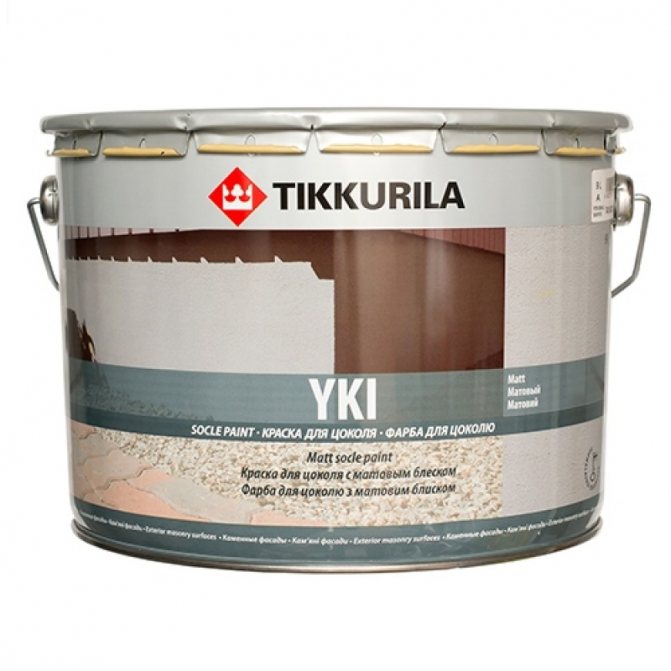
Before you start painting, you need to prepare the surface of the foundation plinth. Such preparation includes:
- Cleaning the surface and removing traces of mold.
- Leveling the surface to be painted.
- Sealing uneven areas with Yuki's solution.
- Treating the foundation surface with silicone primer.
The paint for the facade and plinth is thoroughly mixed. To avoid different colors during the painting process, you need to purchase paintwork materials from one batch and with a reserve. It should be enough for the entire surface to be painted so that you don’t have to buy more.
How to paint the basement of a house? In order to paint the foundation of a house, acrylic paints for concrete are used, which form a protective durable layer that protects the surface from all negative atmospheric influences and moisture.
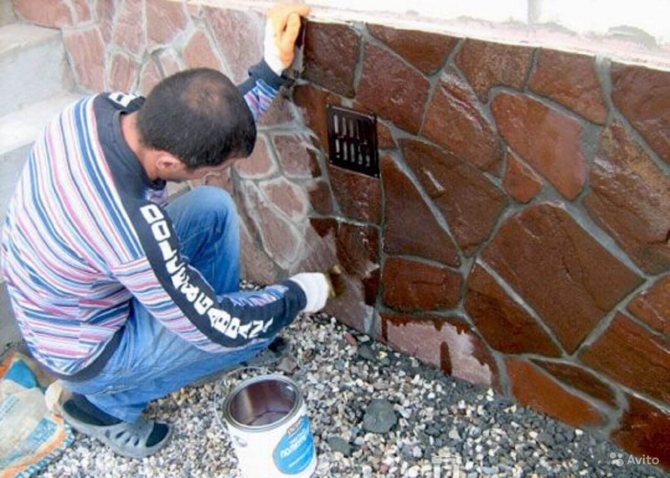
This composition is easy to apply and dries quickly, and is used economically. One coat is sufficient. Thanks to it, the foundation becomes waterproof. All these arguments support the choice of this paint and varnish material.
Latex paints are:
- resistant to any temperature;
- water-repellent;
- quick-drying;
- economical in consumption.
It is also possible to cover the surface of the foundation with polyurethane enamel, which forms an extremely durable, chemical-resistant gloss on its surface.
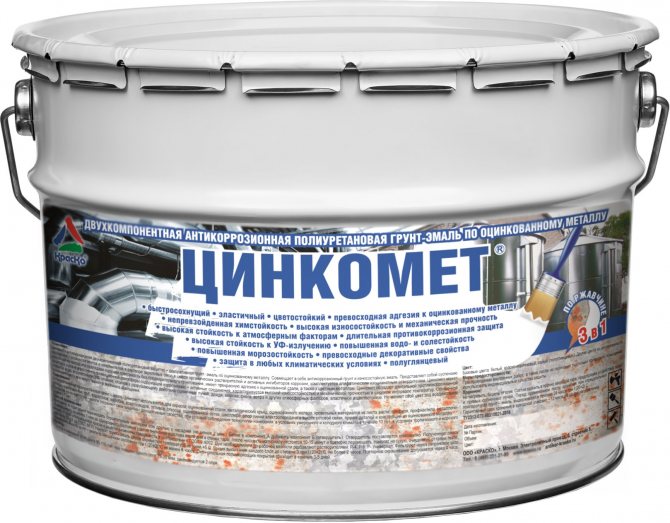
In the video: painting the base with Tikkuril paint.
Step-by-step guide to painting a façade yourself
To get started, you must complete the following steps:
- Clean the surface with brooms, brushes, rags from all types of dirt and inspect for cracks and damage.
- If plastering is necessary, perform the entire range of required work. Dilute the plaster or sand-cement mixture with water, apply to the surface, repair all uneven areas, cracks, imperfections, and allow to dry for 1-2 days.
- Clean the entire surface around the perimeter with abrasive materials.
- Prime the base. Allow to dry for 8 hours.
- Dilute the paint with a solvent, if specified by the manufacturer.
- Apply the coloring material with a brush or roller in a layer sufficient to cover the required area of the foundation. Allow to dry according to instructions.
- Apply a second coat if necessary.
Before you buy paint, you should calculate the amount required. It is better to buy a little more material, which in the future can be useful for ongoing repair work, than not having enough of it when the work is completed.
It is best to use silicone-based compounds as a primer. They fill pores well, hide unevenness and contribute to the economical use of materials.
Instructions for painting the facade with Tikkurila paint - in the video:
Painting concrete surfaces
Applying paint to the foundation is one of the reliable means of protection against corrosion. Such paints must adhere reliably to the surface to be coated, ensuring durability of the coating. As a result, the foundation of the house does not allow moisture to enter and does not release steam from the inside.
For painting concrete, latex and acrylic enamels are most often used, as well as oil-based, polyurethane and alkyd coatings.
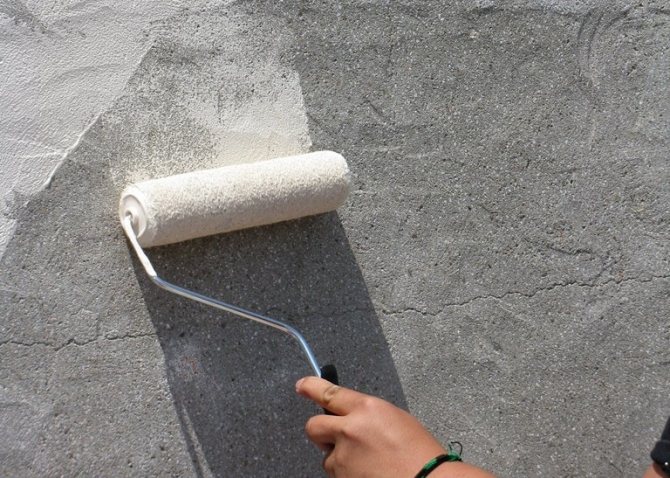
Water-based dyes containing acrylic resins provide protection for the foundation from environmental conditions and other negative influences. This paint has the following advantages:
- dries quickly;
- after drying, the foundation becomes hydrophobic;
- applied in one layer;
- economical in consumption.
Latex paints and varnishes also belong to the water-based type. Thanks to special additives, they do not allow moisture to pass through, tolerate temperature changes well, and dry quickly. Dirt does not accumulate on their surface. The consumption is also low.
Painting the foundation with epoxy compounds will reliably protect the base of the building for at least a quarter of a century. Painting fresh concrete can significantly improve its quality and reliably protect it from negative external influences.

We analyze the methods and methods » Easy renovation of apartments and houses
High-quality and fast installation of systems:
When restoring a roof or insulating a basement, the question often arises: how to dilute the bitumen? Roofs on new buildings are rarely filled with it, since today there are many more attractive options for its insulation and covering. But on old houses, over the decades of their existence, such a layer of roofing material has accumulated that, apart from bitumen, there are practically no restoration options left (after all, it is sometimes not even possible to remove multiple layers).
Painting the base
Yuki paint is intended for painting concrete plinths, as well as for smooth surfaces of foundations. Painting the base is quite a responsible task, since it is constantly exposed to atmospheric conditions, mechanical and chemical loads. The base needs to be treated with protective agents in the form of impregnations and primers. The protective coating is applied to the base according to recommended technologies. The applied coating should be impenetrable, which will provide the foundation of the house with reliable protection. The choice should be made on a composition that ensures reliability and durability.
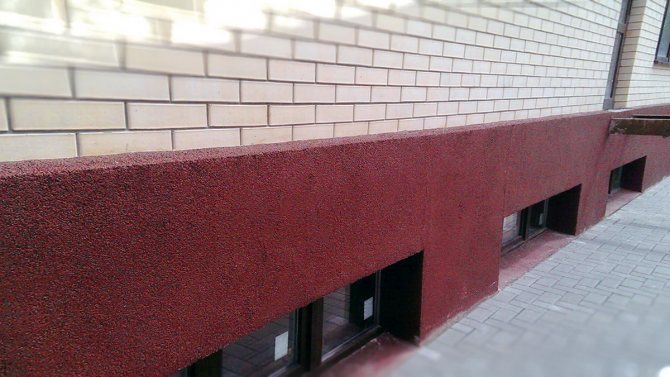
In addition, the paint must be compatible with the material from which the base is made. It must be selected in combination with a primer. Paints and primers for the base must be resistant to aggressive environments. The chemical load is especially high in large cities.
The choice of paint to protect the base is made taking into account the geographical location of the object, the material from which the building is constructed, and the specifics of its construction.
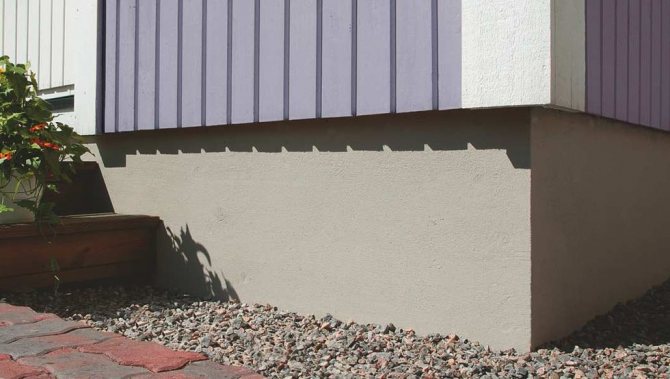
Reliable adhesion of paint to the surface of the base will ensure its protection and durability of the coating. Acrylic dye has a number of undeniable advantages. Its advantages are as follows:
- resistance to chemical influences;
- long term protection of the painted surface;
- moisture resistance;
- strength and reliability.
Epoxy paints also create a reliable coating for the surface of the base and foundation. Such protection is applied even to fresh concrete after it has dried, guaranteeing its long-term protection for many years.
What to paint with?
You need to select the necessary paint in accordance with the surface of the base being used.
Each package of paint and varnish substance contains instructions that indicate for which surfaces this or that paint is intended.
The choice also depends on:
- personal preferences,
- planned design,
- material resources.
At the same time as the paint, you will need to select a primer. Manufacturers recommend a certain type of primer for some paints. It is also worth paying attention to the structure of the material. Matte ones will reflect light, and this will hide the imperfections of the wall.
It is worth paying attention to the shelf life of the paint and the time of planned use. At the same time, it is necessary to purchase the necessary solvents.
Water-dispersion paints will reliably protect the base from any weather conditions, therefore, in areas with unstable climatic conditions, they are especially recommended, as they are invulnerable.
Foundation paint
The foundation requires not only protection, but also improvement. It should look good against the background of the general facade of the house. There are many ways to paint a base, and the choice of paint often depends on the material from which the foundation is built. Before applying paint to the base of the building, you need to prepare its surface for painting.
The foundation must be thoroughly dried and free of dirt. The material is selected taking into account temperature changes in the areas where the foundation is used, and it must contain antibacterial components.
To paint the foundation, you can use textured as well as smooth paints. Facade paint will not only protect the foundation from negative influences, but will also give it an attractive appearance.
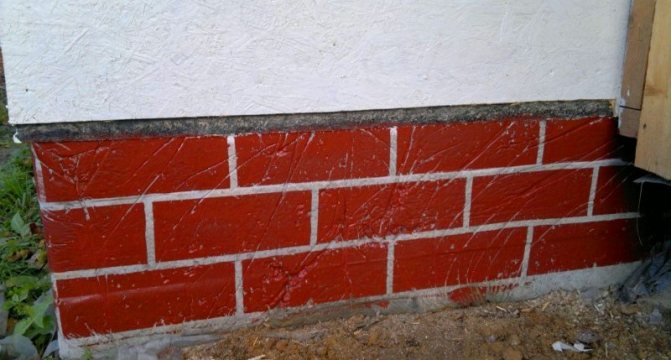
Water-based acrylic facade paint has a number of the following advantages:
- high resistance to weathering;
- reliable protection of concrete from corrosion;
- moisture resistance;
- fast drying time;
- ease of application.
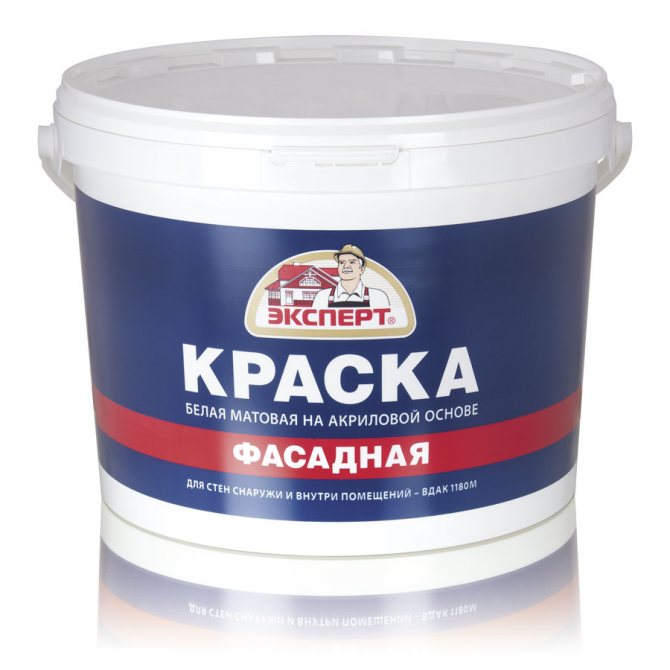
High quality paint is essential for painting exterior foundation surfaces. Facade paints are not afraid of increased exposure to moisture and protect the base of buildings from premature destruction. They retain their original appearance for a long period of time. Acrylic paint Facade-Lux is designed to protect concrete, brick, concrete and other types of foundations. It is intended for outdoor work, and therefore is widely used for painting bases and foundations.
Tips for painting the basement of a house (2 videos)
Beautifully painted base (26 photos)
Cost of materials
Despite the fact that on the websites the paints are written at the same price, together with delivery to the regions of the Russian Federation it can cost much more. The price also depends on the amount of material in the package, composition and manufacturer.
Rubber paint costs from 650 rubles. Simple facade paint sells for 110 rubles. Acrylic paints (2.5 kg) are sold at a price of 950 rubles. Latex paints are sold from 80 rubles. The most expensive is heat-resistant paint, sold in 12 kg packages. Its cost is 7,800 rubles.
As for the cost of painting the base, in the Russian Federation it starts from 150 rubles per 1 m2.
Waterproofing technology
Outdoor waterproofing work can be carried out at an air temperature of at least +5°C. It is prohibited to work during rain, snow, fog or other unfavorable conditions. In case of wind, waterproofing work should be carried out from the windward side.
Bituminous mastic should be applied only to a dry, well-prepared surface.
Before applying layers of coating waterproofing, surfaces prepared for waterproofing are primed with liquefied bitumen.
The coating material must be applied evenly, without gaps, over the entire insulated surface, in at least two layers.
Each subsequent layer is applied only after the previously applied layer has hardened and dried.
On vertical surfaces, mastic is applied from top to bottom in strips, overlapping the previous strips by 10-15 cm.
Places of transition from a horizontal surface to a vertical one, as well as places above the seams between elements of prefabricated structures (buildings), are pre-pasted (reinforced) with strips of rolled material or fiberglass (fiberglass) at least 20 cm wide, and then covered with a coating layer.
Each layer and the entire coating waterproofing as a whole are protected from heating by the sun to prevent the waterproofing material from running off.
Waterproofing with hot bitumen
Bitumen is heated in a bitumen cooker to a fluid state and applied in liquid form to a dust-free base using a spatula, brush, or poured and leveled with special combs (squeegees).
Waterproofing with liquefied bitumen
Hot bitumen can be liquefied with gasoline. In this case, bitumen with a temperature of no more than 70 ° C should be poured into gasoline, and not vice versa, accompanying this operation with thorough mixing with wooden mixers. Leaded gasoline or benzene must not be used as a bitumen solvent.
For small volumes of work, liquefied bitumen is applied with paint brushes, for large volumes - using bitumen sprayers, spray guns with spray guns.
Requirements before and during work
Boilers for cooking and heating bitumen mastics must be equipped with instruments for measuring the temperature of the mastics and tightly closing lids.
The temperature of the mass should not exceed 180 °C and the approximate cooking time is 1.2-2 hours.
Filling a bitumen boiler is allowed no more than 3/4 of its capacity.
The filler loaded into the boiler must be dry. Ice and snow should not enter the boiler.
If bitumen (or mastic) ignites during cooking, extinguishing should be done with dry sand or a fire extinguisher. Do not extinguish flammable mastic with water.
| Interests: No interests specified. |
How to remove bitumen stains from a car
On cars, splashes and drops of bitumen resins appear on the lower parts of the wings, arches and front bumpers (a gift from the vehicle driving ahead). Undesirable resinous tuning is revealed when it has already petrified and become as durable as a metal tile corner, except that it shines less.
Bitumen is resistant to water of any temperature and most water-containing solvents. They are easily removed by benzene, carbon disulfide and other organic solvents - turpentine, white spirit, etc. Before removing bitumen stains from a car, you need to make sure that the car enamel is resistant to the selected solvent. It is best to buy special “Bitumen stain cleaner” or Profam 3000, but be sure to buy branded bottles. These compounds do not leave marks on the varnished surface of the wings and on the chrome hoods.
If a special cleaner is not available, use kerosene or diesel fuel to remove bitumen from your car; they do not interact as actively with car enamel as standard gasoline. Small and rare bitumen splashes can be removed with ordinary butter if you are patient. The place where the bitumen stain was located will need to be polished, otherwise its shade will be discordant with the main color of the car paint.
Waterproofing with bitumen
Coating waterproofing is a multi-layer (2-4 layers) waterproof coating made of plastic or liquid compounds with a total thickness of several millimeters.
Coating with bitumen is the cheapest method of waterproofing and anti-corrosion protection of the surfaces of concrete and metal structures, however, its scope is limited by the insufficient durability of bitumen coatings.
To increase the reliability and durability of coating waterproofing, it is necessary to abandon the use of purely bitumen coatings , primarily due to their insufficient water and crack resistance. For example, after five years of operation in wet soil, bitumen coatings have a water absorption of 12%.
Water resistance
is the most important property of a waterproofing coating, determining its durability. Tests show that when a waterproofing material is saturated with water (water absorption over 5%), it loses up to 15% of its initial strength (water resistance coefficient 0.85), and then cascade destruction occurs.
Latest
How to dilute tar to a liquid state (Monday)I was looking for WHAT TO DILUDE tar to a liquid state
. FOUND!
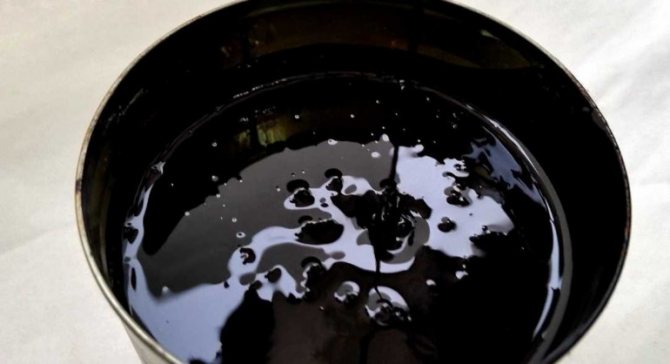
Today, there are many types of work that require material such as bitumen. Each work performed related to bitumen is specific and requires certain knowledge and experience related to the use of bitumen itself.
